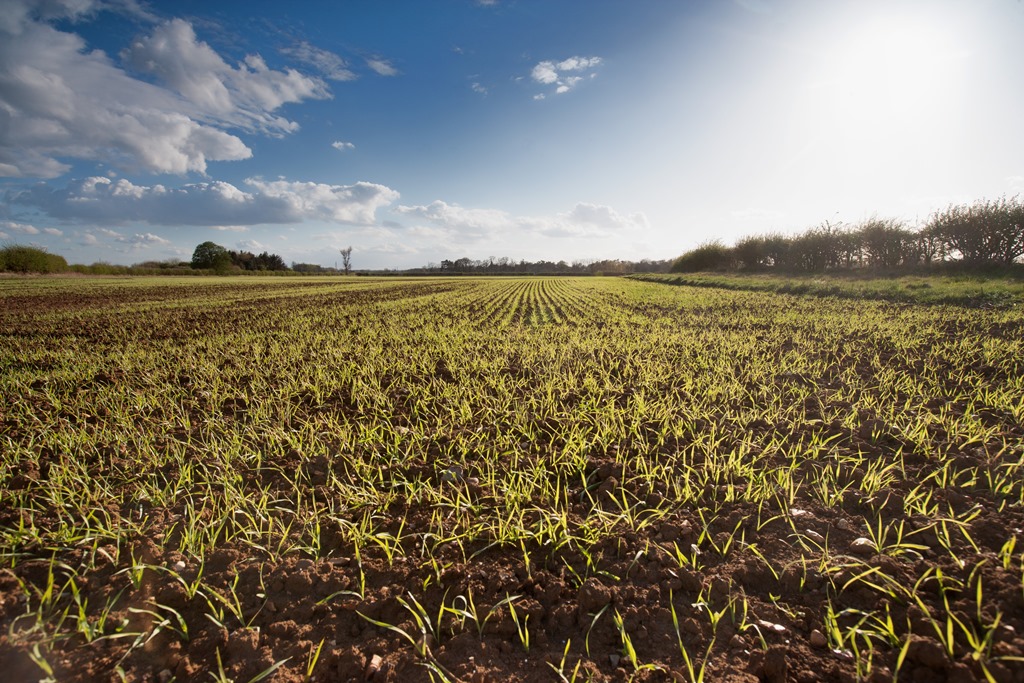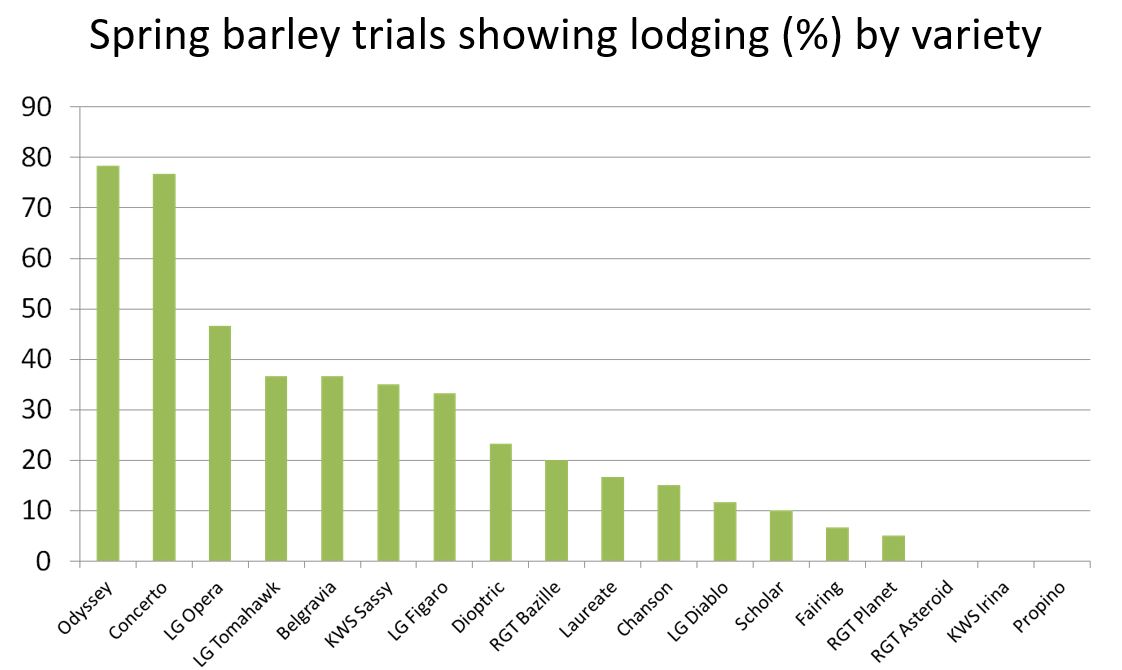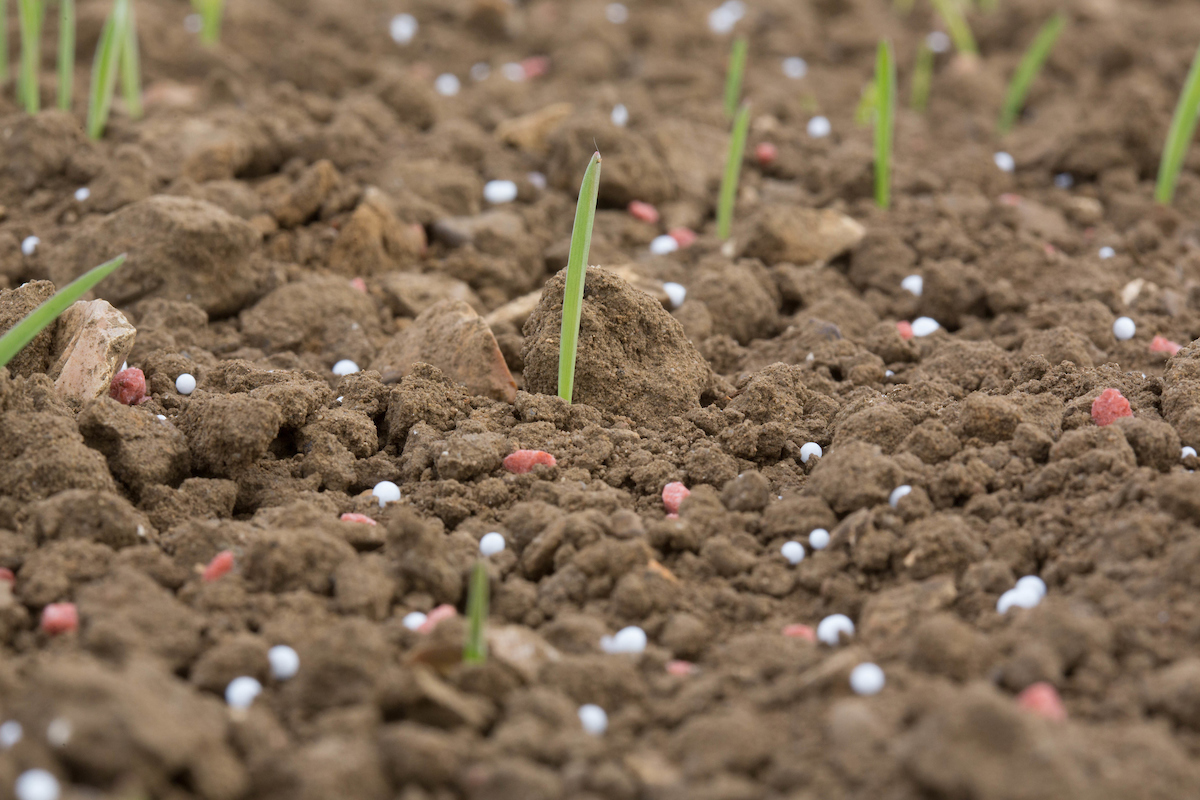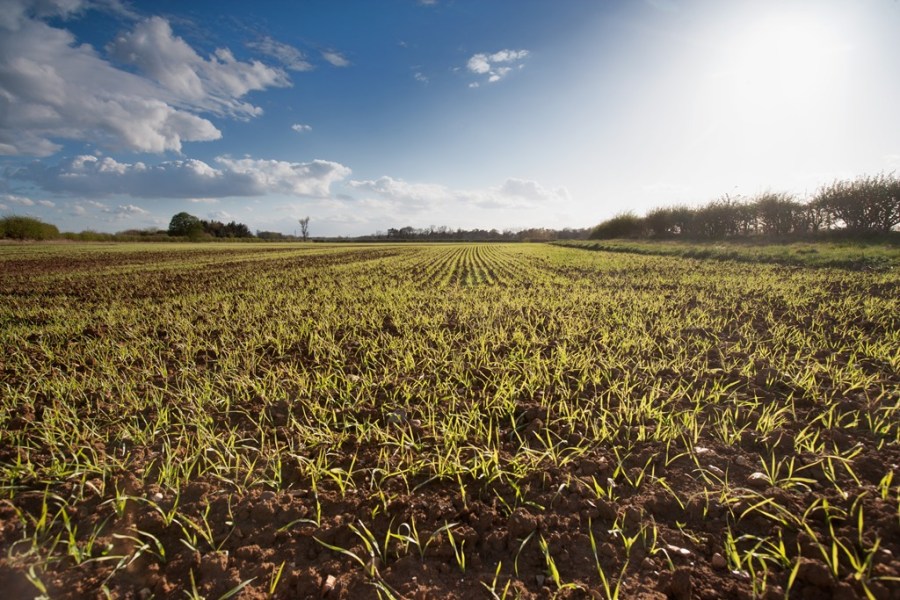 Spring barley has seen a renaissance in recent years but it’s a crop that needs careful management for best returns. CPM delves into Frontier Agriculture’s pool of crop production and marketing expertise for some helpful pointers.
Spring barley has seen a renaissance in recent years but it’s a crop that needs careful management for best returns. CPM delves into Frontier Agriculture’s pool of crop production and marketing expertise for some helpful pointers.
Everything needs to be better for a spring sown crop.
By Lucy de la Pasture
2017 presented a challenging season for many spring barley growers and with a relatively open autumn there may be less area planted in 2018, says Frontier grain product manager Jonathan Hoyland. “That reduction, which we believe could be by around 5%, could actually be good news for those who choose to maintain their spring barley area in 2018,” he adds.

A probable reduction in area planted in 2018 could be good news for spring barley growers, says Jonathan Hoyland.
“There’s been a changing of the guard when it comes to spring barley varieties, with the rise of Planet and the retreat of Propino and Irina. New entrant Laureate is also making its mark, a low GN variety that is the first since Optic that may be multi-use,” says Jonathan.
“Propino was the market leader in 2017 with a 22-23% share of certified seed sales, but its share has dropped substantially from the previous year,” clarifies Frontier seeds manager Chris Piggott. “Planet has increased massively to account for 22% of certified seed and offers a headline yield of 5% above Propino along with lower grain nitrogen levels.”
The rise in Planet isn’t just a UK phenomenon, says Jonathan. “It has also increased in the EU, particularly in France. That means that brewers will have to take lots of Planet, the French farmers are forcing their hand. The increase in areas in the UK will be readily taken up by the maltster and we’ll also see a greater uptake by UK brewers. It’s performed well in brewing trials, so I don’t foresee any difficulties with its marketing,” he confirms.
From an agronomy point of view Planet has plenty to recommend it, adds Chris. “It’s equal to or better than alternatives on rhynchosporium and ramularia and appears to perform more consistently year on year than either Propino or Irina.”
Frontier has also noticed more lodging at their northern trial site in some of the older spring barley varieties than in the newer ones. “Concerto is weaker strawed than the newer varieties but Propino still holds its own on the lodging front,” he adds.

Source: Frontier Agriculture
For the Scottish market, Concerto and Laureate are likely to remain the mainstays. “Concerto has been dominant for a long time but Laureate agronomically offers more, with a yield potential of an additional 10% according to AHDB Recommended List and Frontier trials. It’s also significantly better when it comes to brackling and lodging.”
With barley malting premiums offering +£20-26/t on a 1.85 grain nitrogen contract and an additional £5-10/t for the lower nitrogen grades, achieving the specification is all important. For many growers, blackgrass has forced their hand into returning spring plantings to the rotation. Established spring barley growers already have a blueprint for their farms, but for newcomers on heavy land the crop can present a challenge, says Frontier crop production technical lead Dr Paul Fogg.
In 2017, the spring barley area increased by 17% in response to the rotational switch into spring cropping, he highlights. “It’s a crop where establishment is key – a spring crop needs a good start because it has very little time in the ground. The temptation is to get it in early to give the crop more time, but soil conditions are far more important than drilling date.”
Cover crops
Does the recent trend in planting cover crops over the winter provide an opportunity to get spring barley in earlier? Paul believes the jury is still out on that but agrees cover crops have a useful role to play when it comes to soil restructuring and nitrogen capture over the winter period, particularly where oil radish is used.
“While the cover crop is growing, it’s taking moisture out of the soil. Once growth stops then this isn’t a benefit. It’s important to get rid of the crops biomass pre-planting by burning off early otherwise it can have a negative effect on establishment. Although direct drilling into the cover crop residue can be successful in the right situation and with the right equipment,” he notes.
One of the pioneering areas Frontier will be investigating in their trials programme is the use of mycorrhizal fungi. “We’ll be inoculating cover crops with mycorrhiza to see if there’s any benefits. It may be that this will help speed up establishment of the succeeding spring barley crop.
“One of the potential challenges with a cover crop is that it can suppress blackgrass germination if it has a thick canopy, which may lead to a bigger flush of blackgrass in the spring crop,” he warns.

Where blackgrass control is a primary objective, Paul Fogg cautions that all the same principles apply as for autumn-planted crops.
Where blackgrass control is a primary objective, Paul cautions that all the same principles apply as for autumn-planted crops.
“Move as little soil as possible so new blackgrass seed isn’t brought to the surface,” he suggests, adding that it’s also a useful strategy for moisture retention, especially in the East where drought is often a problem.
“Seed rates need to factor in likely germination and should aim for a final plant stand of 250-300 plants/m2. Earlier spring drillings are likely to get about 80% establishment, whereas later in the spring this will rise to around 95%.”
Because seedbeds can often dry out in the spring, Paul advocates the use of phosphite to maximise early rooting and help ensure vigorous early growth as an addition to the crop nutritional programme.
“Phosphite can help the crop be more resilient to drought conditions. Getting deep rooting and a good root density is critical because when a crop runs out of moisture then its yield potential is effectively capped,” he comments.
Early plant growth regulators (PGRs) also have a role to play in encouraging rooting, reminds Paul. “Reducing the apical dominance will prompt early rooting and tillering, which is important because spring barley yield is influenced by the final number of shoots/m2,” he says.
The PGR’s other role is to temper crop nutrition and prevent lodging. “Spring barley crops need to be managed according to the season and any PGR applications linked to nitrogen inputs. In 2017 it was too dry in the spring for many crops for an application of PGRs and later in the season crops went flat,” he notes.
A follow-up PGR at early stem extension, with a further application at GS 47-49 to help reduce brackling can be advisable, although this is a characteristic most influenced by variety and season. “We saw a real issue with brackling last harvest, with as much as 1t/ha being lost on the floor. Fungicide choice can also play a role in helping reduce these losses, with BASF’s Xemium technology (fluxapyroxad) demonstrating a benefit on straw quality and helping to mitigate some of the risk.”
Fungicide applications are very season specific, reckons Paul. “In a normal year, a two-spray programme with one application of an SDHI would be sufficient. Ramularia risk seems to be on the rise so an increasing number of crops are receiving chlorothalonil as part of the fungicide programme,” he adds.
Nutrition starts with seedbed prep
Spring crops have so much growth to do in so little time that seedbed conditions are a prime consideration when it comes to ensuring adequate nutrition, believes Frontier national crop nutrition technical manager Edward Downing.
“Plants need to put a root system down and, at the same time, rapidly take up significant amounts of nutrients. Spring crops don’t have time to work around any soil structural issues so these need to be sorted out in advance.
“Everything needs to be better for a spring-sown crop than an autumn-sown one, so it’s a case of stacking the odds in its favour by waiting the extra day or two for good seedbed conditions. Establishment is the key to yield,” he notes.

NPK fertilisers provide significantly more landing sites so all the nutrients, but particularly the phosphate, are more likely to end up close to a plant.
A key role of nutrition is to aid establishment. “Fresh phosphate will have a positive effect on rooting, especially when soil indices are low but will still offer benefit when indices are relatively high. Consequently, soil levels are less of a factor when considering the phosphate needs of spring crops. The bigger the root system, the more soil roots will explore to scavenge nutrients and access water.
“Apply phosphate as early as you can, either at drilling or incorporate it into the rooting zone pre-drilling so it’s nearer to the seed. If you have the kit, then placement is even better,” he adds.
Frontier trials have shown a strong trend that applying phosphate with some nitrogen gives better results than applying as a straight, either as a NPK compound or diammonium phosphate (DAP). “The nitrogen helps kickstart growth. NPK fertilisers are a good fit for spring crops because as well as applying all the key nutrients in each application, there are significantly more landing sites so all the nutrients, but particularly the phosphate, within each granule are more likely to end up close to a plant in a broadcast situation,” he adds.
Potash (K) is important for nutrient uptake and water management but is more dependent on soil levels than phosphate. “Bring in K where it’s specifically needed for low to moderate soil indices (2- and below) but most soils with indices of 2+ or more probably have enough.”
One of the major nutrients that Edward feels is being neglected in spring crops is sulphur. “More than 50% of spring crops didn’t receive any sulphur last year, according to survey figures, even though it’s well established that they respond to additional sulphur.

Edward Downing explains that spring barley plants need to put a root system down and, at the same time, rapidly take up significant amounts of nutrients.
“Our Berks ‘3Dthinking’ trial site showed significant yield increases of 0.8t/ha on average where sulphur was applied, and grain quality was also improved with grain nitrogen levels 0.17% lower due to the dilution effect. That could make all the difference between success and failure when it comes to meeting malting spec,” he stresses.
Perhaps the most complex decision when it comes to spring barley production is how much nitrogen to apply and Edward highlights that it’s very difficult to be prescriptive with nitrogen rates. “Nitrogen application in spring barley is so dependent on the end market and yield potential of the site. Local knowledge and historic performance on the farm are invaluable when it comes to making nitrogen decisions,” he says.
If new to the crop and no tacit knowledge is available, then Edward suggests a cautious approach. “Start on the low side but try a higher rate of +30-50kgN/ha somewhere in the field to build up experience on the farm quickly. So if contracted for grain nitrogen at 1.85, then applying 120-125kgN/ha would be fairly common, but perhaps start at 100kgN/ha but apply 150kgN/ha to a tramline or two.”
Plant breeders have thrown another spanner in the works in the last few years when it comes to nitrogen application, he comments. “Newer varieties, such as Planet and Laureate, have higher yields and it’s possible to apply more nitrogen without grain nitrogen increasing. The challenge is to push crops as hard as you can for yield without grain nitrogen levels exceeding contract limits, but there is clearly scope for higher nitrogen rates,” he comments.
Edward reckons growers should experiment to find their own parameter for nitrogen with these newer varieties. “If you’re on a 1.85 grain N contract but are producing crops in the range 1.5-1.6 then there’s scope to try higher rates of nitrogen, but this must be done in conjunction with assessing your growth regulator program. If you’re growing under spec crops then you’re losing potential yield and therefore margin,” he concludes.
Arable resilience
UK Farming is facing changing times which will bring both new challenges and opportunities. Whatever happens, businesses that adapt and have a resilient strategy in place will be better placed to weather the changes and emerge fitter and stronger, ready to take advantage of what lies ahead. But what does that mean on farm?
In this sponsored series, CPM has teamed up with experts from Frontier to examine the everyday management decisions and explore what separates a resilient strategy from one that leaves a business exposed. From rotations, nutrition and precision techniques, through seed choice, genetics and markets to soil and plant health, the aim is to highlight the elements that ensure the arable business thrives.




